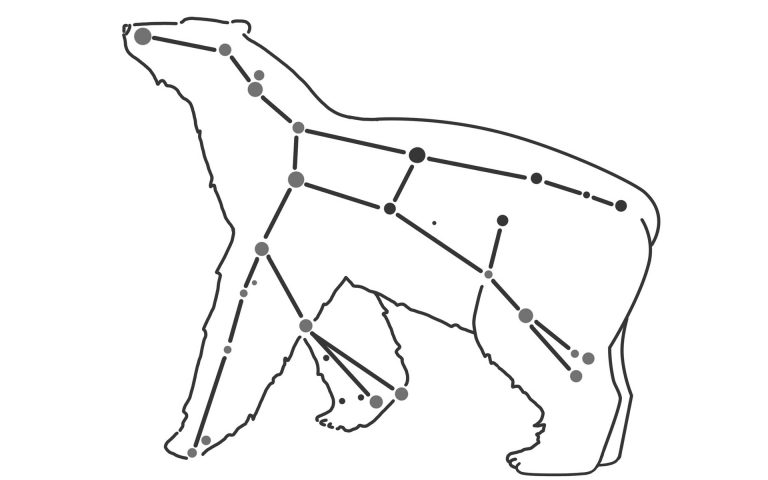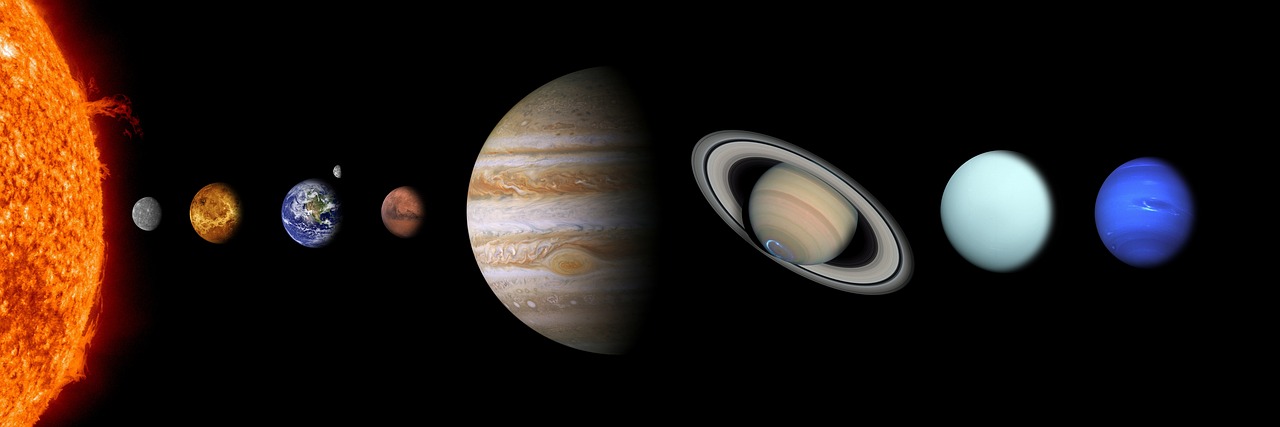When you go out at night, you usually don’t want to encounter a car. But if you know where to look – at the stars – then the constellations of the Big Dipper and the Little Dipper are always overhead.
The constellations of the Big Dipper and the Little Dipper belong to the Ursa Major and Ursa Minor constellations, also known as the Great and Little Bear. The stars that make up these constellations are visible almost always in the northern hemisphere. While the Greeks, Romans, and Native Americans saw bears in these constellations, other cultures saw a wagon, plow, coffin, and many other things. Because it’s Bear Awareness Week, we’ll focus on bear stories.

This drawing shows the Ursa Major constellation (the Great Bear, the Big Dipper).
Can you find the Big Dipper in the Ursa Major constellation?
The written history of Ursa Major and Ursa Minor dates back thousands of years. Ptolemy, in one of the earliest surviving books on astronomy, listed Ursa Major and Ursa Minor as one of the 48 constellations. References to them appear in even older works, such as Aratus’ poem from 275 BC. In this blog post, the author mentions myths that go even further back in history.
Like many other stories from history, there is more than one version of the Ursa Major and Ursa Minor myth. According to one version, Ursa Major represents Callisto, who had a child with the king of the Greek gods, Zeus. When Zeus’ wife Hera found out, she turned Callisto into a bear. One day, Callisto’s son was hunting and saw a large bear without realizing it was his mother. To save them both, Zeus placed them in the sky. Callisto became Ursa Major, and her son Arcas became Ursa Minor. In other stories, Zeus transformed Callisto into a bear to hide her from Hera. Different stories use the Roman versions of the gods, Jupiter and Juno.
Bears in ancient Greece were Eurasian brown bears, which are related to grizzly bears found in North America. These bears differ from black bears that inhabit New Mexico. Currently, there are an estimated 450 brown bears in the Greek mountains. Overall, bear populations in Europe are declining due to habitat loss, but several groups in Greece are working to protect them.
One story says that when Zeus placed the bear in the sky, he stretched its tail. Interestingly, some Native American tribes told stories of the bear in this collection of stars. However, they didn’t see the handle of the Dipper as an enormous bear’s tail. Instead, they saw the stars as hunters pursuing a bear. Like the Greek and Roman myths, there are many versions of this story among Native Americans. Here is one version, an Iroquois story about hunting the Great Bear.





